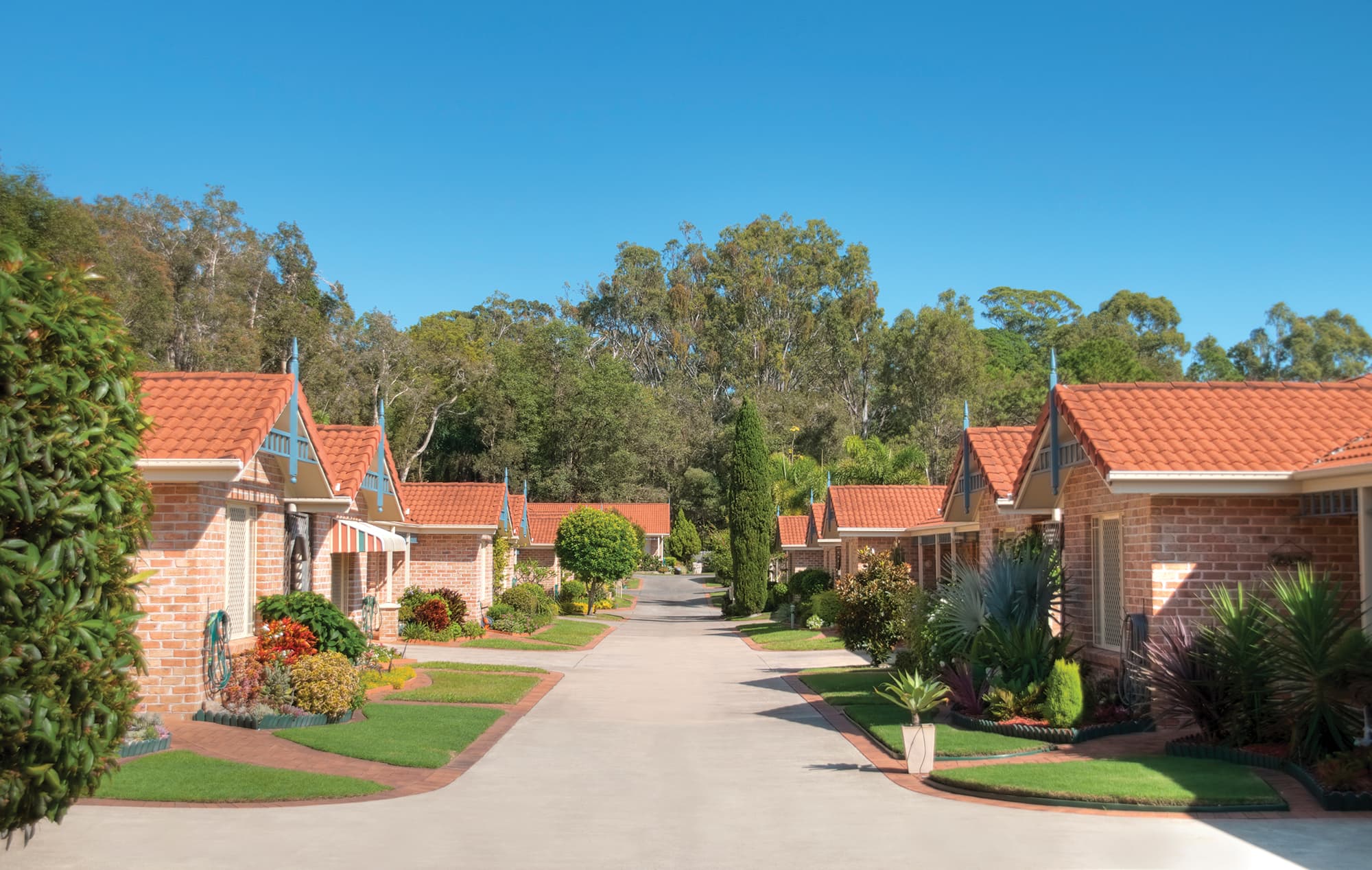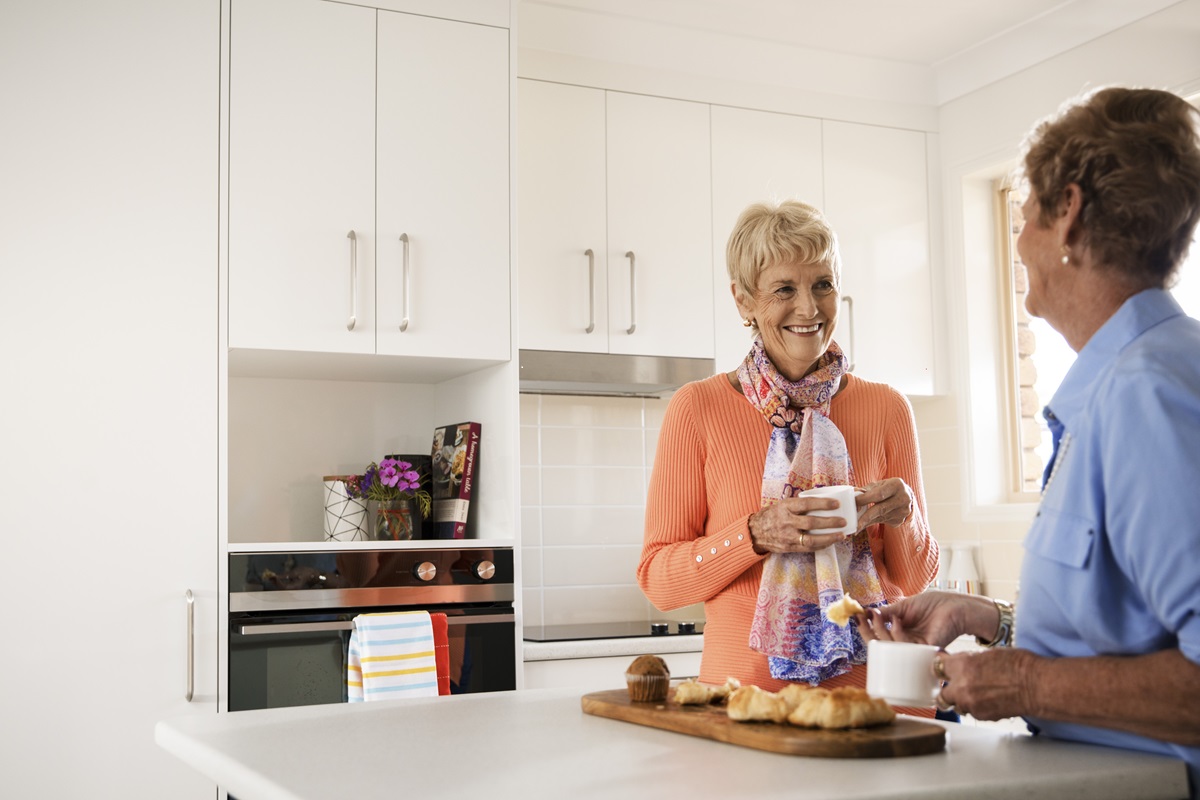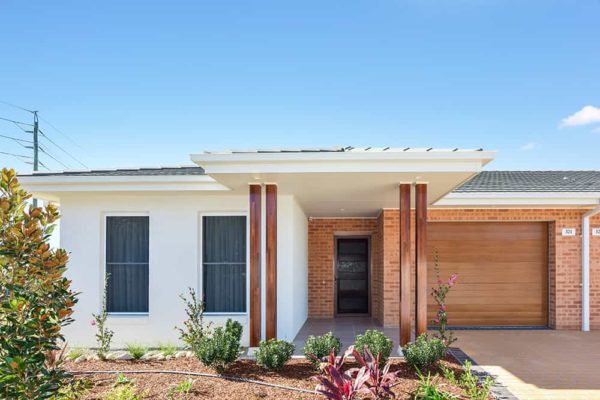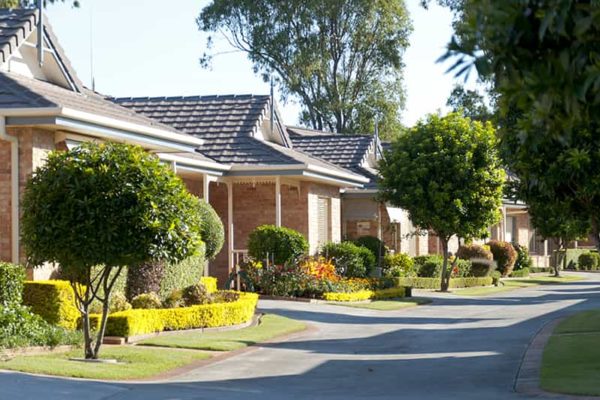The best way for you to get a feel for a retirement village is to book a tour and ask questions, lots of them!
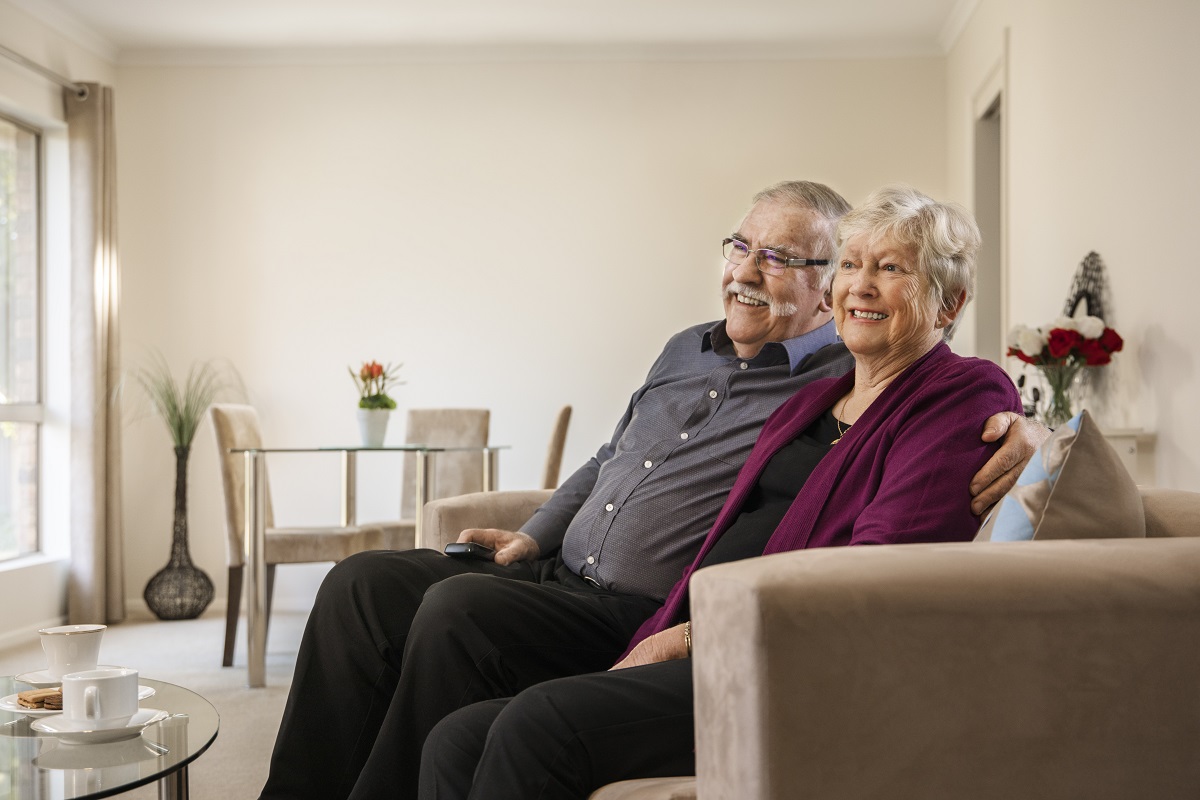
Retirement villages tours
Touring a retirement village is the ideal way to experience the community first hand and to discover what village life is really like. Most importantly, it is an opportunity for you to ask lots of questions and to see if it is somewhere you would like to call home.
During a village tour, you will spend time with the Sales Consultant and the Village Manager, and you’ll meet residents too. It is your chance to gather information, inspect properties, review costs and inclusions, tour the amenities and explore the community.
But, what questions do you ask while you are there? To help you out, we have put together a list of the top questions you should ask on a village tour so you can make an informed decision about where you choose to call home for life’s next chapter.
Do retirement villages allow pets?
A good question to ask on a village tour is if the community is pet friendly? You wouldn’t want to move into your new home to find out your furry little friend can’t come with you.
Thankfully, you will find many retirement villages are pet friendly. In fact, at RetireAustralia, we consider pets to be part of the family, and they are welcome to move in with their owners at the majority of our retirement villages. You can view which RetireAustralia communities welcome pets here.
If the village you are exploring is pet friendly, it is worth asking if there are any restrictions on pets, for example, their size and how many pets you can have.
What are the entry fees for retirement villages?

It’s really important to get a strong handle on the financial side of moving into a retirement village. And a good place to start is understanding what the entry costs are and what you get for your money.
The entry payment is the upfront price you pay to live in your home in a retirement village on a long-term lease (usually 99 years). The amount will depend on the size, style and location of your chosen home.
In a RetireAustralia community, the entry fee is generally 80% of the median house price in the local area. This helps make your move into a village more affordable and leaves you with more funds to enjoy life after you move into the village.
You should also ask if there is a cooling off period or any change of mind assurances. This will give you peace of mind that you have a get out clause should you decide that retirement village living is really not for you. In our experience, very few residents look back after they move in, nevertheless it’s important to know you have this security.
Having this information upfront means you won’t have any surprises after you move in.
Do you pay any fees while you live in a retirement village?
Monthly service charges – also known as recurrent charges, general services charge, weekly/ monthly fees or the service fee – cover the cost of shared facilities and services.
Typically this covers things like council and water rates, building insurance, maintenance, staff, a 24-hour emergency call system and access to communal facilities.
By law operators are not allowed to make a profit from these charges which are set at cost-recovery only.
So that you know exactly what costs you may need to consider in your budget ask questions like:
- What are the services fees?
- Are they charged fortnightly or monthly?
- What do they cover?
- What don’t they cover?
What are exit fees in retirement communities?
A deferred management fee, or exit fee, is payable when you leave the village. This keeps entry prices as competitive as possible, leaving you with more funds to enjoy retirement.
The exit fee is effectively ‘an enjoy now, pay later’ scheme, which helps reduce the cost of moving into a retirement village. It covers the operator’s initial investment in the village and funds capital replacement works and village upgrades. In short, it helps ensure that all residents have access to quality facilities and amenities while they’re living in the village.
We know you are only just considering moving in, so you’re probably wondering why even worry about the details of moving out? Well, it’s really important that you have all the facts before you move in so you can rest easy knowing exactly what you will need to pay at every stage.
To get the financial clarity you need, ask questions like:
- How much is the exit fee?
- How is the exit fee worked out?
- What does it cover?
- Do you help prepare my home for sale?
- Do you offer a guaranteed buyback if my home isn’t sold in a certain timeframe?
At RetireAustralia, we understand you need certainty about your financial future. Our sales contract offers a simplified financial process and a high level of financial clarity at every stage. So from the day you move in, you’ll be able to calculate how much you will receive when you leave the village. You can even download a copy of our sales contract brochure here.
What is it like living in a retirement village?
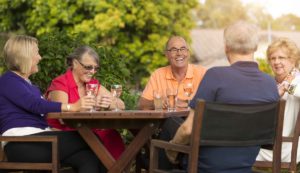
This is a good question! One of the benefits of living in a retirement village is the sense of community and being able to form connections with people at the same stage of life.
Your village tour guide is likely to tell you that all the residents are lovely, everyone gets along, and there is a strong sense of community. While this might be the case in some retirement communities, it may not be in others. To get the inside scoop, ask to speak with an existing resident or two.
Speaking with residents can provide you with a different perspective on what it is like living in a retirement village. They may also be able to share with you what they like most about the community and what you might want to watch out for or look forward to.
For an honest perspective on what life is really like in a retirement village, find out what residents Del and Evon have to say.
What type of accommodation does the village offer?
Accommodation in a retirement village can range from a one-bedroom unit to a three-bedroom villa that can be semi-detached or stand-alone. And, depending on the community you are visiting, the accommodation might be part of a broad-acre community or a new vertical village, or both.
Ultimately, the type of accommodation you choose really comes down to your needs and the village you are exploring. Maybe you are after an independent living unit where you can enjoy your freedom and independence, knowing you have the safety net of a secure like-minded community. Or perhaps, you need a little extra care and support and would prefer a serviced apartment.
In addition to the type of accommodation available, you might want to ask your guide about the specific age-friendly features available, for example, spacious open plan living, ovens and kitchens set at waist height and wider hallways and door openings.
If you can, ask to tour the different types of accommodation so you can make some comparisons about what will best suit your needs. With so many choices available, you might even want to take some notes so you can refer to them again later.
What care services are available if I need them?

To maintain your independence and continue doing the things you love in your own home, at some point, you may need a little extra care and support. Anticipating your future care needs can be tricky as we don’t always know what the future will hold, so ask questions like:
- Do you offer in-home care services?
- What services can in-home care include?
- Who provides these services?
- Is there a 24-hour emergency call system?
- If my care needs change, or I need a little more support, is there an option to transition into a serviced apartment in the same village, or to increase support in my own home?
Finding out about the care and support services available in the village can give you peace of mind that you can stay living independently in a community you know and love for longer.
What are my retirement village ownership rights?
Buying into a retirement village is a big financial decision, so you will want to ask about your ownership rights.
The two main types of retirement village ownership rights are leasehold and strata title.
A leasehold agreement means the retirement village operator owns the land and the unit, while you acquire the right to reside in your home for the duration of a long-term lease, generally 99 years. Your tenancy is secure for as long as you want to stay. The upshot of this is that you won’t need to pay stamp duty, which is generally one of the biggest upfront costs when buying a property.
A freehold strata title agreement means you own your home and share ownership of common facilities and land with your fellow residents. Under this ownership model, you’re required to pay the costs associated with this ownership – including stamp duty and ongoing strata fees.
You can learn more about how costs and ownership work in a RetireAustralia village here.
What is the security like at this retirement village?
If safety and security is important to you, ask your guide about the security measures available in the village. Ask questions like:
- Does the retirement village have a gated entrance?
- Are there security cameras or an alarm system?
- Is there a 24-hour emergency call system?
One of the benefits of living in a retirement village is the sense of community and knowing there is always someone looking out for you, always someone who cares. This provides residents with security and peace of mind.
Are guests allowed?
Another great question to ask on a village tour is if guests are allowed? After all, you are likely to want visitors and guests to come and visit you in your new home.
In a RetireAustralia community, we want you to feel at home and we encourage family and friends to visit and stay overnight if that suits you. Different villages have different rules, so it is best to ask if guests are welcome and if there are any parameters around how long they can stay and if they can use communal facilities while they are visiting.
What are the retirement village’s facilities?

Living in a retirement community generally means having access to a wide range of facilities, activities and events. The facilities in a retirement village may include a library, swimming pool, gym, barbecue area, bar, workshop, billiards room, bowls green, tennis court, craft room, hairdressing salon, medical consulting room, community centre and a restaurant or café.
If there are particular facilities, activities or events you are looking to have in your new community, be sure to ask your tour guide if they are available and if you can check them out.
How close is the retirement village to shops medical services and transport?
When touring a retirement community, you might be focused on what is available inside the village. However, you should also consider the amenities and facilities available in the local area. Ask questions like, how close is the village to:
- Public transport?
- Supermarkets?
- Medical facilities?
- Social hubs, shopping centres and restaurants?
- Parks, gardens and green spaces?
Your village guide can advise how far you are away from the local amenities and the best way to get there, whether it is a short walk, drive or bus ride. If you are not familiar with the local area, see if they can mark these on a map so you can familiarise yourself with them later.
Want to go on a tour?
If you’re considering making the move into a retirement community, the next step is to organise a tour. If there are several retirement villages in your chosen area, why not visit all of them, and get a feel for each one.
Armed with this helpful list of questions to ask on a village tour you will be able to gather the facts you need to make an informed decision about the next place you choose to call home.

